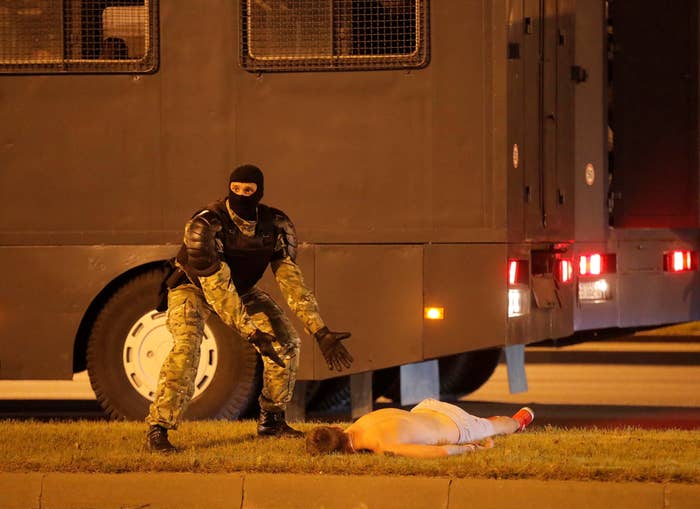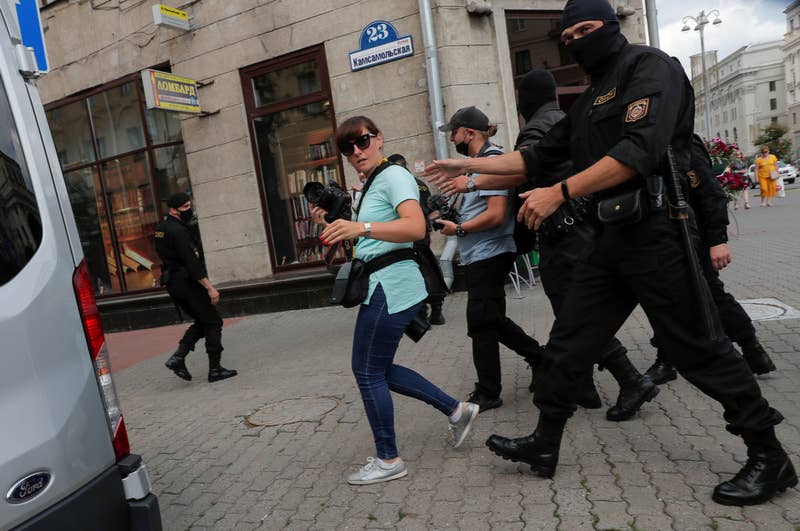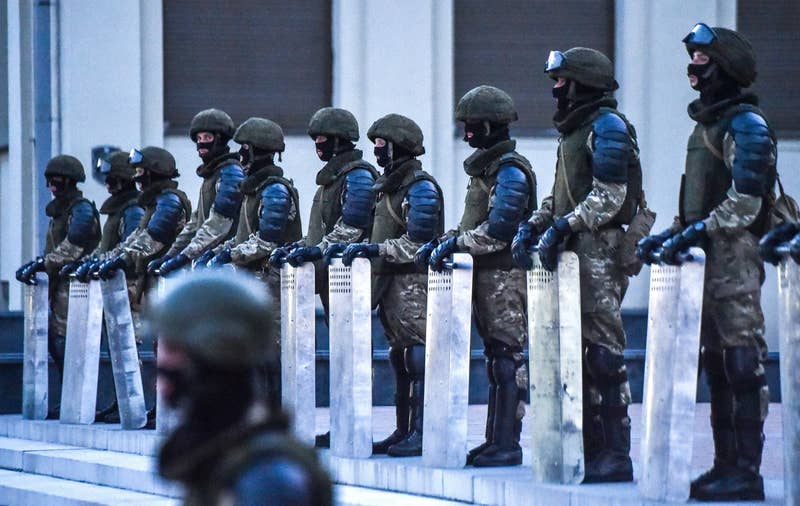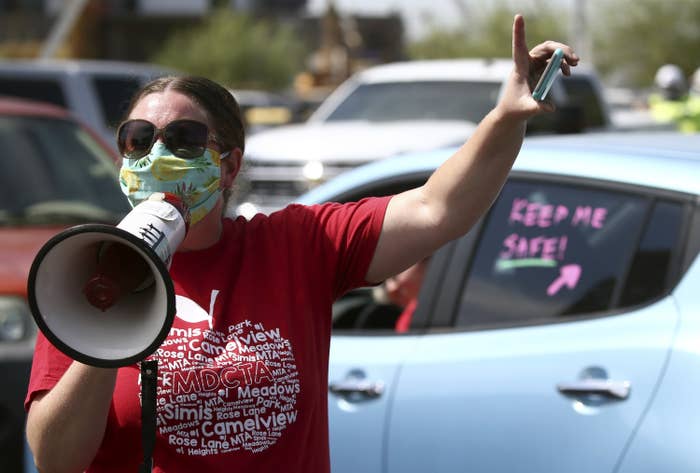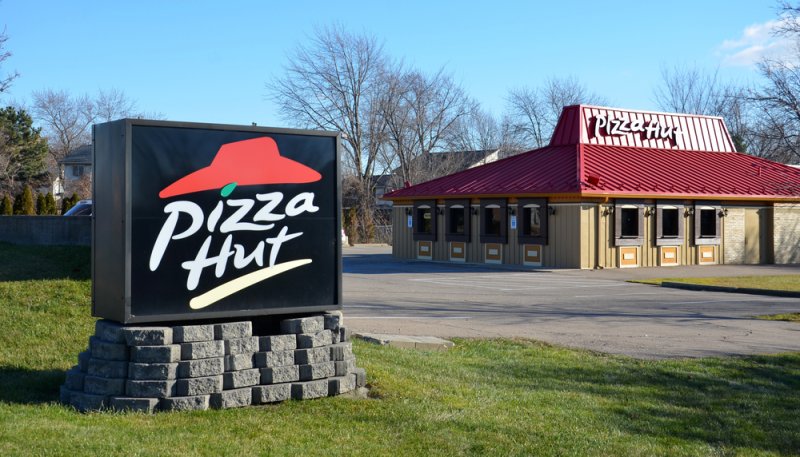If implemented, the rule would take effect for 90 days and block immigrants who've been in Mexico or Canada within the last two weeks from legal protections.
Hamed AleazizBuzzFeed News Reporter
August 14, 2020
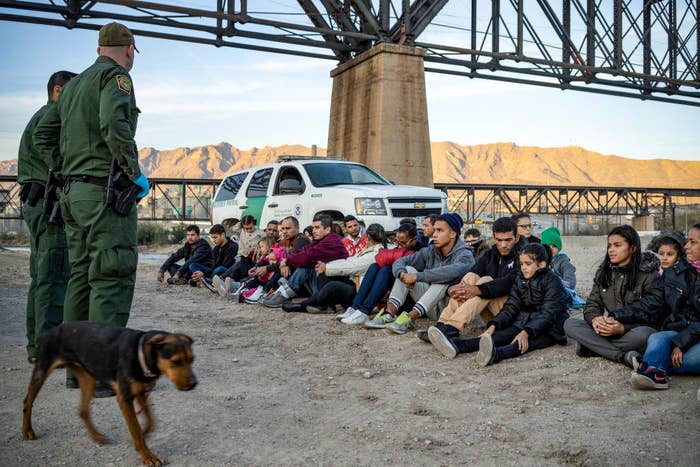
Paul Ratje / Getty Images
A group of immigrants sit on the ground near US Border Patrol agents in Sunland Park, New Mexico, March 20, 2019.
BuzzFeed News has reporters around the world bringing you trustworthy stories about the impact of the coronavirus. To help keep this news free, become a member.
The Trump administration has drafted a new rule that would take effect immediately and treat those seeking protection from persecution at a US land border as security threats if they had been in Mexico or Canada within the last two weeks of their arrival, according to a draft obtained by BuzzFeed News.
The draft rule, if implemented, would block affected asylum-seekers from legal protections and be in effect for 90 days immediately after it’s issued.
The draft rule cites the effort to limit the spread of the coronavirus within the US, but would represent the latest attempt by the Trump administration to restrict asylum protections at the border.
In the time since the coronavirus caused a global pandemic, President Donald Trump has blocked green cards for certain individuals abroad and cut work visas. Separately, an order issued by the CDC has allowed border officials to quickly send back those coming to the border, including children who arrive on their own.
“The pandemic has allowed the Trump administration to accomplish what they had been working towards for years — a complete shutdown of asylum at the southern border. This regulation shows that they have no intention of walking it back willingly,” said Sarah Pierce, an analyst at the Migration Policy Institute. “By layering their policy change with multiple bureaucratic tools, they are doing everything they can to insulate the asylum shutdown against legal challenges.”
Administration officials posted a notice for a rule in July that would allow Department of Homeland Security (DHS) officials to block asylum for those coming from countries determined to be suffering from a spread of health emergencies, but it did not take effect immediately and was undergoing a formal process to become policy.
The draft of the rule obtained by BuzzFeed News states that the US cannot wait to implement an immediate block of asylum at land borders. DHS officials declined to comment.
This new rule would immediately make those who attempt to enter the US at a port of entry or who cross without authorization on or after the day the policy is issued ineligible for asylum and a separate protection known as “withholding of removal” if the individual has been in Mexico or Canada for any length of time in the 14 days prior to their arrival. The new rule, which does not apply to green card holders, would appear to work in unison with a separate order that also limits protections.
Since March, DHS officials have turned back thousands of immigrants at the southern border by using an order issued by the CDC that bars the entry of those who cross into the US without authorization. Administration officials argue that the policy is necessary to prevent the spread of the coronavirus in the US and has been a key tool for border agents.
The new draft rule could also provide a backstop should a federal court step in and block the current policy of quickly turning around immigrants at the southern border.
The drafting of the rule comes as the coronavirus continues to spread in the US. As of Thursday, more than 5 million people in the US have contracted COVID-19, while more than 160,000 have died of the disease. But immigrant advocates believe the draft rule would be unnecessary as a form of protection against the coronavirus.
“The Trump administration is once again using COVID-19 as a pretext to accomplish their long-sought goal of destroying the United States’ asylum system,” said Aaron Reichlin-Melnick, a policy analyst at the American Immigration Council. “Public health experts agree that mass-deportation of refugees is not a valid response to COVID-19, and that it would be wrong to deport people to their deaths in the name of “public health.
August 14, 2020

Paul Ratje / Getty Images
A group of immigrants sit on the ground near US Border Patrol agents in Sunland Park, New Mexico, March 20, 2019.
BuzzFeed News has reporters around the world bringing you trustworthy stories about the impact of the coronavirus. To help keep this news free, become a member.
The Trump administration has drafted a new rule that would take effect immediately and treat those seeking protection from persecution at a US land border as security threats if they had been in Mexico or Canada within the last two weeks of their arrival, according to a draft obtained by BuzzFeed News.
The draft rule, if implemented, would block affected asylum-seekers from legal protections and be in effect for 90 days immediately after it’s issued.
The draft rule cites the effort to limit the spread of the coronavirus within the US, but would represent the latest attempt by the Trump administration to restrict asylum protections at the border.
In the time since the coronavirus caused a global pandemic, President Donald Trump has blocked green cards for certain individuals abroad and cut work visas. Separately, an order issued by the CDC has allowed border officials to quickly send back those coming to the border, including children who arrive on their own.
“The pandemic has allowed the Trump administration to accomplish what they had been working towards for years — a complete shutdown of asylum at the southern border. This regulation shows that they have no intention of walking it back willingly,” said Sarah Pierce, an analyst at the Migration Policy Institute. “By layering their policy change with multiple bureaucratic tools, they are doing everything they can to insulate the asylum shutdown against legal challenges.”
Administration officials posted a notice for a rule in July that would allow Department of Homeland Security (DHS) officials to block asylum for those coming from countries determined to be suffering from a spread of health emergencies, but it did not take effect immediately and was undergoing a formal process to become policy.
The draft of the rule obtained by BuzzFeed News states that the US cannot wait to implement an immediate block of asylum at land borders. DHS officials declined to comment.
This new rule would immediately make those who attempt to enter the US at a port of entry or who cross without authorization on or after the day the policy is issued ineligible for asylum and a separate protection known as “withholding of removal” if the individual has been in Mexico or Canada for any length of time in the 14 days prior to their arrival. The new rule, which does not apply to green card holders, would appear to work in unison with a separate order that also limits protections.
Since March, DHS officials have turned back thousands of immigrants at the southern border by using an order issued by the CDC that bars the entry of those who cross into the US without authorization. Administration officials argue that the policy is necessary to prevent the spread of the coronavirus in the US and has been a key tool for border agents.
The new draft rule could also provide a backstop should a federal court step in and block the current policy of quickly turning around immigrants at the southern border.
The drafting of the rule comes as the coronavirus continues to spread in the US. As of Thursday, more than 5 million people in the US have contracted COVID-19, while more than 160,000 have died of the disease. But immigrant advocates believe the draft rule would be unnecessary as a form of protection against the coronavirus.
“The Trump administration is once again using COVID-19 as a pretext to accomplish their long-sought goal of destroying the United States’ asylum system,” said Aaron Reichlin-Melnick, a policy analyst at the American Immigration Council. “Public health experts agree that mass-deportation of refugees is not a valid response to COVID-19, and that it would be wrong to deport people to their deaths in the name of “public health.

Hamed Aleaziz is a reporter for BuzzFeed News and is based in San Francisco.
